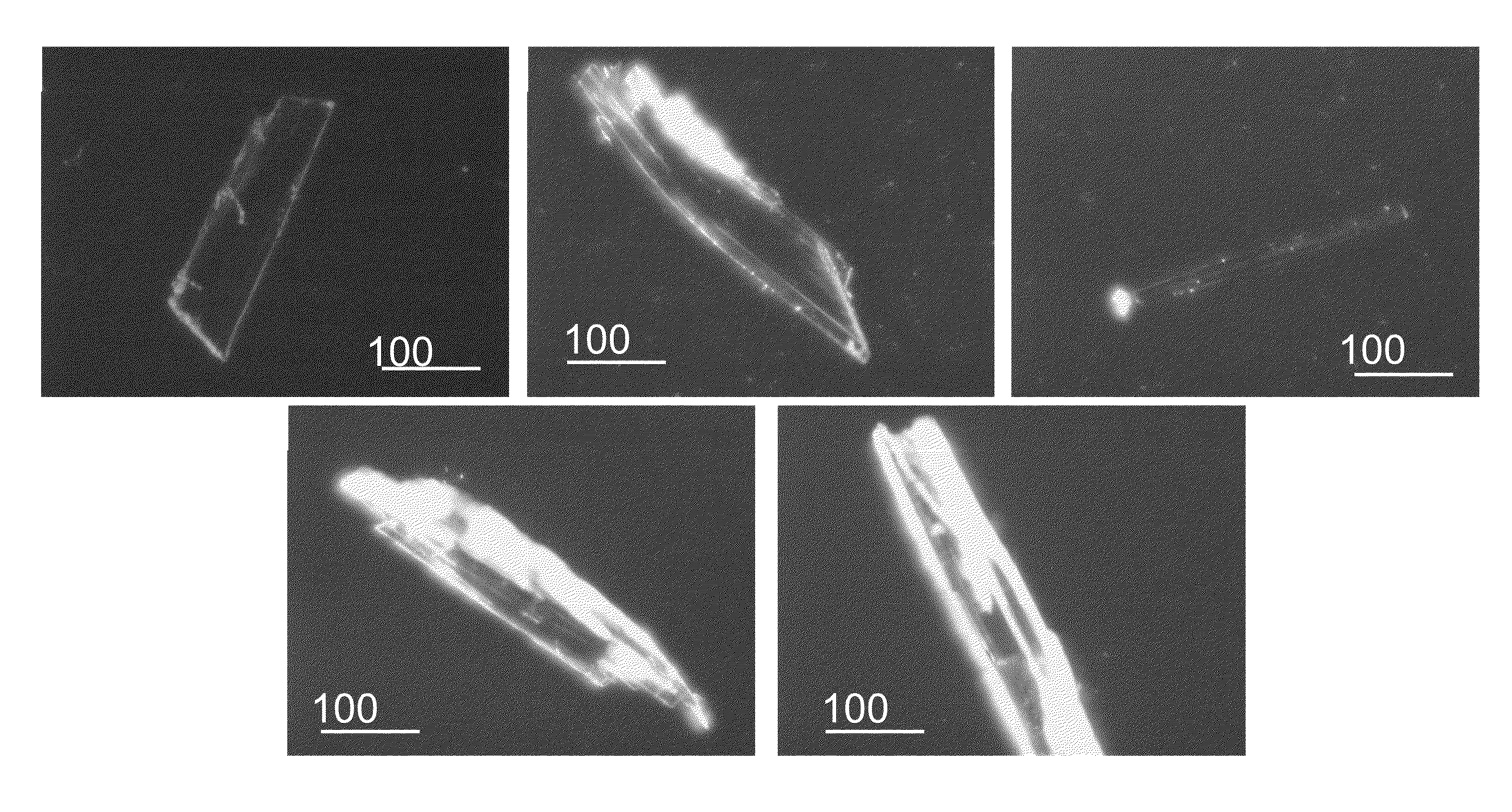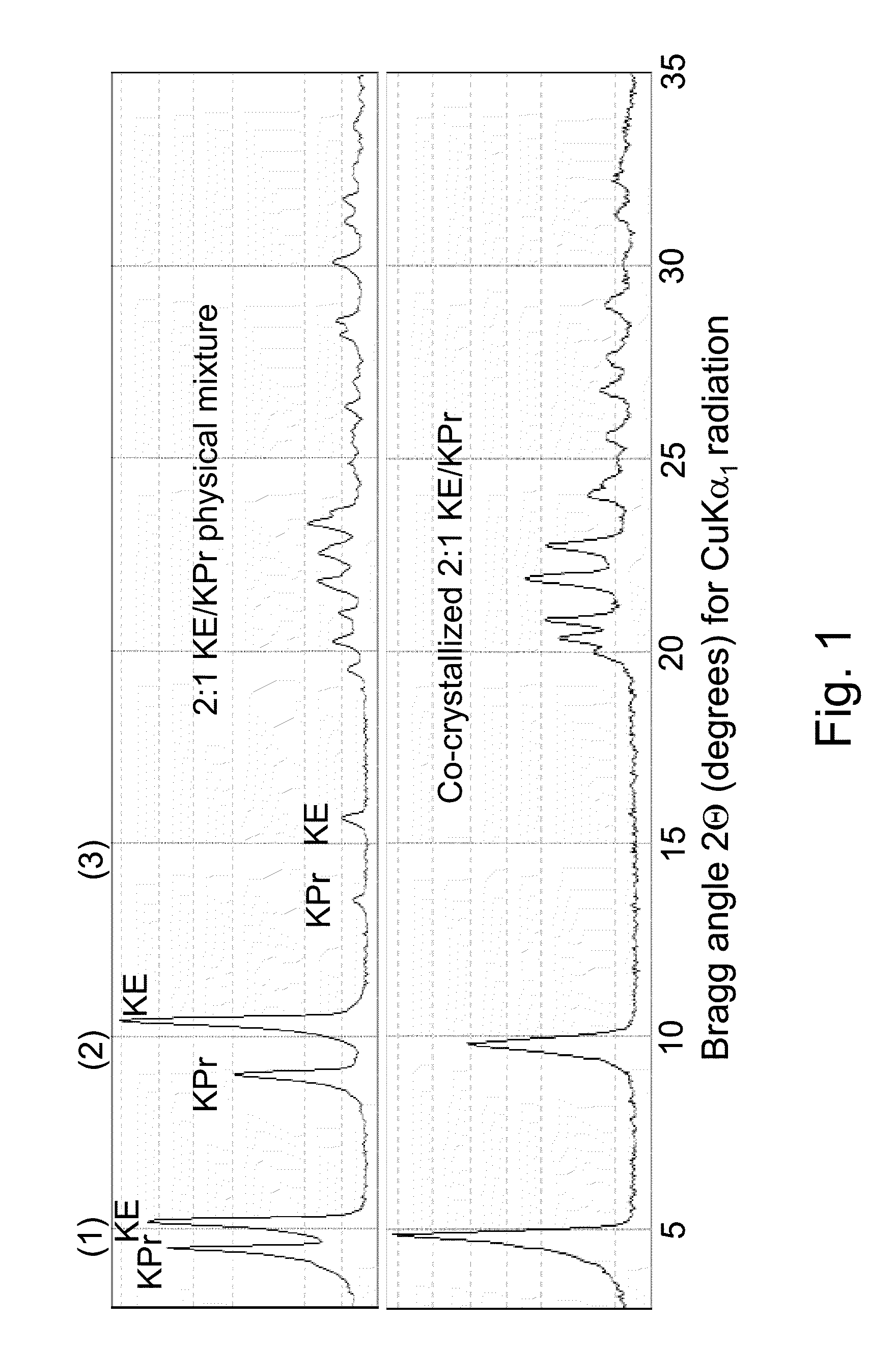Co-crystallizable diacetylenic monomer compositions, crystal phases and mixtures, and related methods
a diacetylenic monomer and crystal phase technology, applied in the field of cocrystallizable diacetylenic monomer compositions, crystal phases and mixtures, can solve the problem of limiting the choices availabl
- Summary
- Abstract
- Description
- Claims
- Application Information
AI Technical Summary
Benefits of technology
Problems solved by technology
Method used
Image
Examples
example 1
Co-crystallization of a 2:1 2,4-hexadiyn-1,6-bis(ethylurea) / 2,4-hexadiyn-1,6-bis(propylurea) Mixture at different cooling rates
[0191]0.133 g of 2,4-hexadiyn-1,6-bis(ethylurea) and 0.067 g of 2,4-hexadiyn-1,6-bis (propylurea), a 2:1 weight proportion, are weighed together into individual 20 ml scintillation vials. Solvent sufficient to provide 2 to 8 grams of a solution is added to each vial, as follows to provide the indicated combined weight concentration of the two monomers:
1.8 grams of solvent 10 percent;
4.8 grams of solvent 4 percent; and
7.8 grams of solvent 2.5 percent.
[0192]Separate vials are prepared using glacial acetic acid (“acetic acid” herein) and aqueous ethanol having a proportion by weight of approximately 80:20 ethanol to water. Unless the context indicates, “aqueous ethanol” is used herein to indicate the product of mixing 80 parts by weight of ethanol with 20 parts by weight of water. “Ethanol” as employed herein refers to pure ethanol which under normal storage co...
example 2
Filtration and Drying
[0201]When each of the precipitated co-crystallization mixtures produced in Example 1 reaches room temperature, each vial is opened and residual solution is filtered off through a filter plate having a 2 μm pore size, for example a TTTP isopore filter from Genesys (Korea) which is a polycarbonate, track-etched filter.
[0202]The crystals collected are washed with acetone, placed in aluminum boats, covered with perforated aluminum foil to maintain the crystals in darkness and dried under vacuum for 1-2 hours at room temperature. If not intended for immediate use, the co-crystallized monomer crystals are then promptly transferred to a freezer for storage. It is believed that little polymerization occurs when following the procedures of Examples 1 and 2. In the case of higher reactivity monomers, drying can be curtailed or conducted at a lower temperature, if desired, to reduce nascent polymerization.
[0203]The average particle size of the crystals obtainable is depen...
example 3
Co-crystallization of a 2,4-hexadiyn-1,6-bis(ethylurea) / 2,4-hexadiyn-1,6-bis(propylurea) Mixture at a 1:1 Weight Ratio
[0204]Example 1 is repeated employing 0.1 g of 2,4-hexadiyn-1,6-bis(ethylurea) and 0.1 g of 2,4-hexadiyn-1,6-bis(propylurea) in place of the weights of monomer stated in Example 1.
PUM
| Property | Measurement | Unit |
|---|---|---|
| 13C chemical shifts | aaaaa | aaaaa |
| 13C chemical shifts | aaaaa | aaaaa |
| 13C chemical shifts | aaaaa | aaaaa |
Abstract
Description
Claims
Application Information
 Login to View More
Login to View More - R&D
- Intellectual Property
- Life Sciences
- Materials
- Tech Scout
- Unparalleled Data Quality
- Higher Quality Content
- 60% Fewer Hallucinations
Browse by: Latest US Patents, China's latest patents, Technical Efficacy Thesaurus, Application Domain, Technology Topic, Popular Technical Reports.
© 2025 PatSnap. All rights reserved.Legal|Privacy policy|Modern Slavery Act Transparency Statement|Sitemap|About US| Contact US: help@patsnap.com



